Masonry paint is different to regular household paint, and many people may not know why it is different.
There is a lot of confusion about masonry paint and its uses, but today, we’re answering all the questions about this type of paint to help you understand the differences and which paint you should use for your next project.
If you’ve ever wondered about masonry paint, this is the article for you. Let’s start off by answering what exactly masonry paint is, shall we?
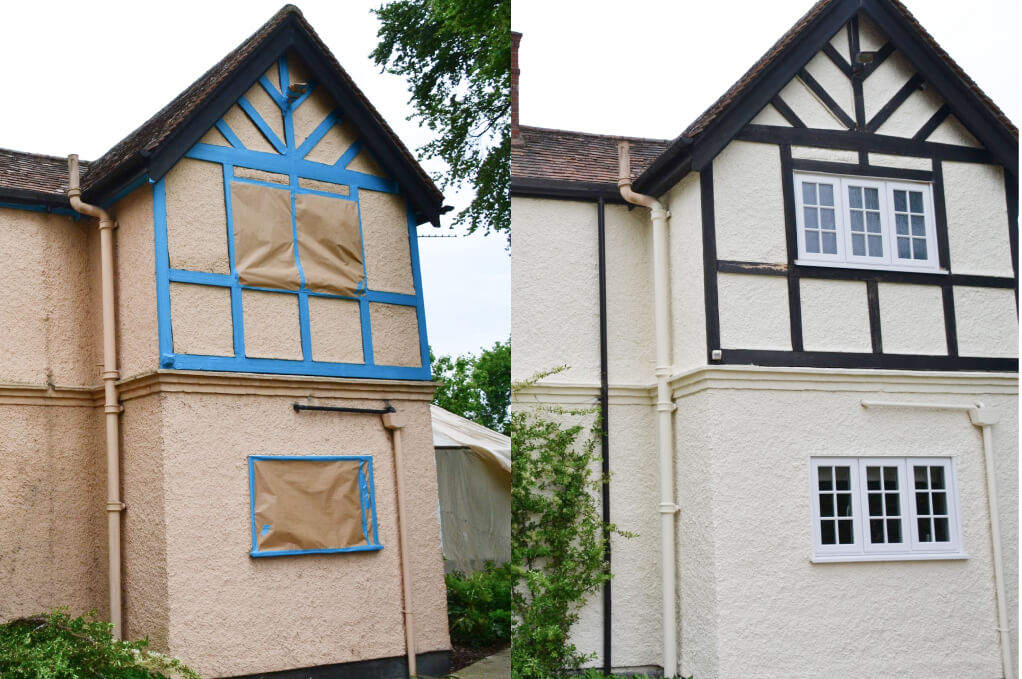
Masonry paints are designed purposefully for use on exterior walls.
It can be used on brickwork, concrete, stone, lime, plaster, pebble dash and cement render.
Because it is designed for use outside, masonry paint must perform extremely well. You see, along with adding a chosen colour to your exterior masonry, it also adds protection. It can protect your external walls (and as a result your house) from the weather, rain, mould, general wear and tear and even pollution. How do masonry paints do this? Well, it seals the masonry but allows it to breathe too. So, it protects your home but still allows moisture to escape.
Just before we get to the types of masonry paint, here is a brief description of exactly what paint is.
pigment + binder + vehicle = paint
All paints are made from a pigment (the colour of your choosing), a binder (either natural or chemical that keeps the paint together and offers certain protection in some cases, and a vehicle (this carries the pigment and binder and allows you to coat a surface with the paint). The vehicle will either be absorbed by the surface or evaporate, leaving the binder and the pigment behind, creating the painted surface. In most masonry paints, it is different binders that change the paints. Acrylic and mineral binders, for example.
Let’s look at the different types of masonry paint to understand this further, shall we?

Acrylic masonry paint is the most commonly available.
They are water-based paints with an acrylic binder that provides brilliant protection for the outside of your building.
These water-based paints come in a huge variety of colours and offer protection against water and weather.
If your home already has a layer of masonry paint, there is a very good chance it is acrylic. If you need to refresh that coat, acrylic is your best option. It helps the brickwork breathe yet keeps your home protected very well.
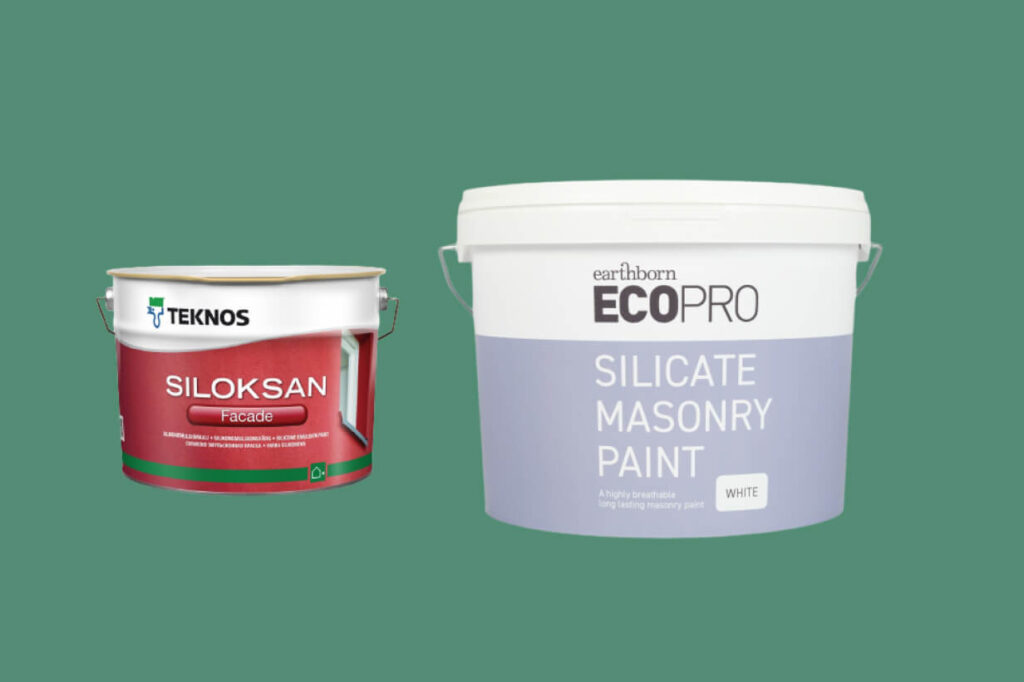
Mineral masonry paints were first invented in the 1900s by a paint chemist in Germany. A chemical reaction in this paint allows it to knit itself into the masonry of the building.
Mineral or silicate-based paint instead of forming a new layer on the surface, get absorbed into the surface. Coating becoming part of the surface rather than forming a layer on top of it.
This means that this masonry paint is extremely durable but very breathable as well. Rather than just coating the surface like acrylic masonry paint, this becomes part of the surface.
The only downside to this masonry paint is that it can be tricky to get hold of, and it is often more a higher price than acrylic paint. However, it does last longer, so the cost can be justified.
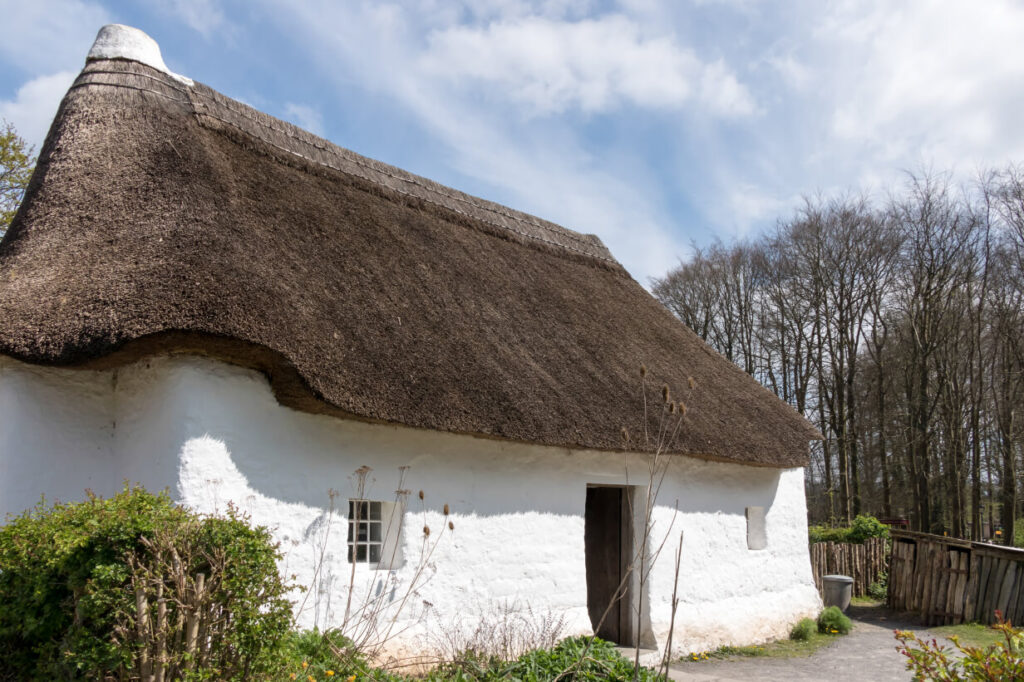
Limewash has been used on homes for hundreds of years. Most of us have seen limewashed houses all over the UK.
It is the traditional way of protecting the exterior of a building against the elements and has worked well for hundreds of years.
The issue with limewash, though, is that it needs to be reapplied every few years or so. It can become unstable if it isn’t repainted. Most modern paints come with 15 years guarantee.
However, it is also highly breathable, unlike some modern equivalents. Limewash is the most authentic finish for older properties, but it must be reapplied frequently to ensure the property is protected.
If you’re looking to paint an older building, limewash could be your only option. If your building is listed, likely, you can only use limewash to protect it.
If your building isn’t listed or it has already had a coat of modern masonry paint (with the proper consent for a listed building), either of the masonry paints above will be good for you.
As we said, mineral-based masonry paints are fantastically breathable and very durable. Still, they aren’t as readily available as acrylic.
Acrylic paints are the goldilocks paint between mineral-based and limewash. They are readily available compared to either of the other options, cheaper than mineral-based and more durable than limewash.
The paint you choose depends on your situation and what you are allowed to paint your home with.
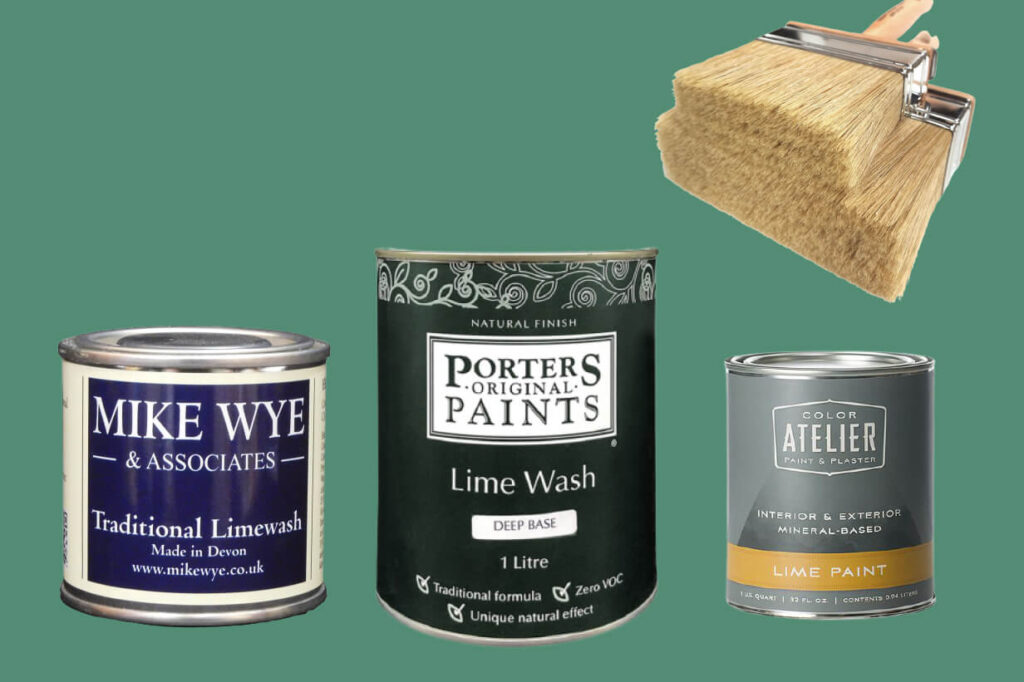

There are also oil-based masonry paints that are a good choice in certain circumstances. For example, oil-based paints are showerproof in 30 minutes. They also dry in an hour and can be used in colder conditions than water-based paints. So, you can use oil-based paints in the winter, for example. Oil-based paints have much better stain blocking properties, so you can cover stains or use them on garden walls that don’t have damp proof courses, without watermarks bleeding through.
There are some downsides to oil-based paints, though. Firstly, they are more expensive than water-based. They are also harder to clean up (they require specialised cleaning solutions) and worse for the environment than water-based. Plus, they aren’t as easy to thin down and don’t last any longer than water-based or offer any more protection. So, while oil-based masonry paint certainly has a place in the market, most people choose water-based paints as they’re much easier to work with.
Preparing masonry ready for paint isn’t too difficult, yet each step is crucial to getting a brilliant finish. If you want to repaint your masonry, here is how to prepare any sort of masonry ready for paint.
Remove flaking paint
Using a wire brush, remove any flaking paint you can see. Be careful to ensure that you remove any unstable paint in this step as the new paint will need a solid surface to bond to.
Fill all cracks
If you notice any cracks or holes in the masonry, these will need to be filled before you begin painting. You can use any good quality masonry filler for this step. However, do remember that most filler will shrink as it dries, so you may need to reapply it before moving onto the next step.
Sanding
If you’ve needed to overfill cracks and holes for a good finish, you will need to sand the filler smooth to ensure a good finish. You may also need to sand the current paint to remove any minor cracks that don’t need filling. Take your time sanding the masonry, as this will ensure an excellent finish when you begin painting.
Cleaning
If there is any mould, dust or grime on the masonry, you will need to clean it. Otherwise, the paint will stick to the grime and dust and not the masonry and won’t give you the desired results. Ensure all grime is removed, and let the masonry dry before you paint.
Masking
One of the most vital parts of painting masonry is masking off everything you don’t want paint on. Windows, doors, any wood, for example, should all be masked off. Depending on the painting technique you plan on using, you may even want to cover bushes and things surrounding the house to ensure that no overspray gets on them.
That is how to prepare masonry for paint. But which painting technique should you use? Well, we have articles about the common painting techniques right here that will help you decide.
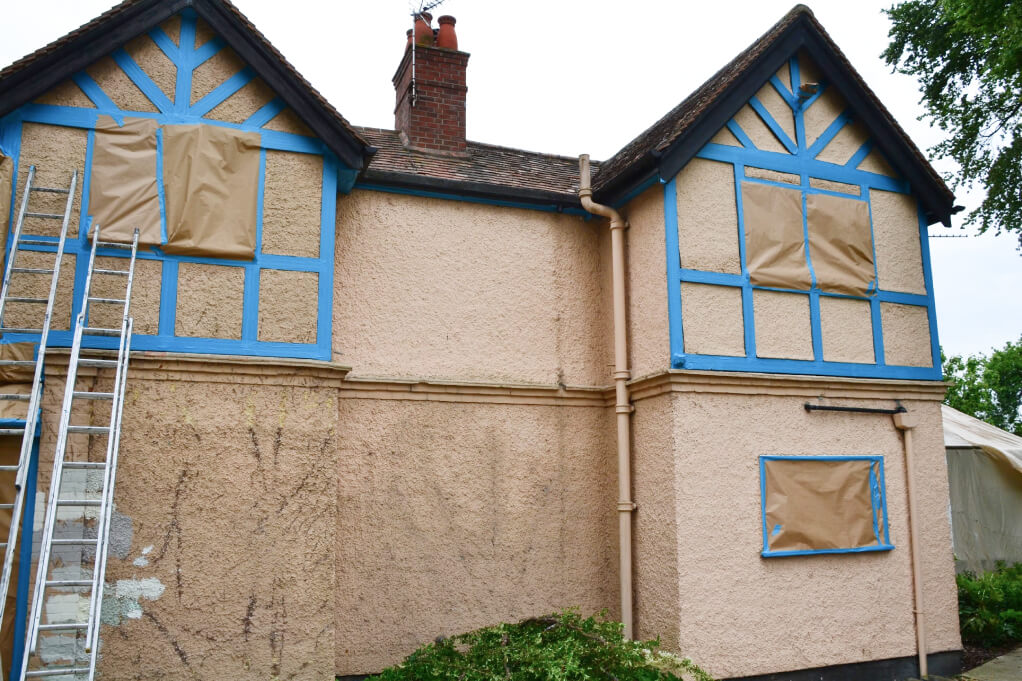
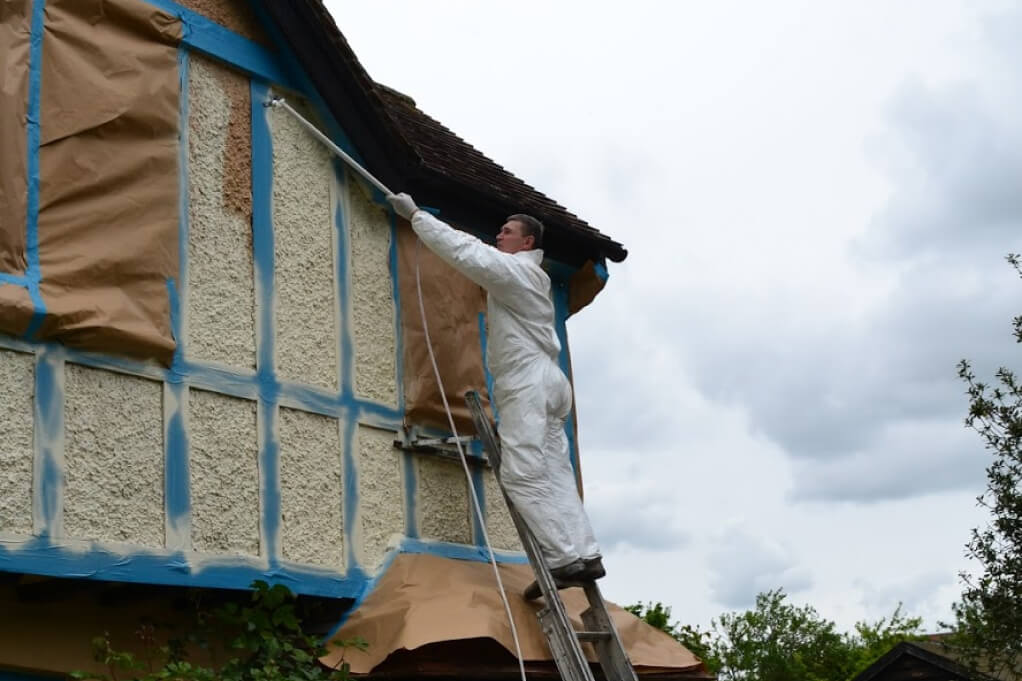
If you want to use a paint sprayer to paint the exterior walls of your home, here is a step by step guide to help you. Whether you’ve never done any painting before, or you have some experience, this guide will help. We also have a guide on how to paint sash windows or any other types of wooden windows, that might be useful for you.
Spraying masonry paint sounds scary, but it is all to do with good preparation and then learning the correct techniques. It is well worth watching a few YouTube videos about proper paint spraying techniques; you’ll quickly get the hang of it!
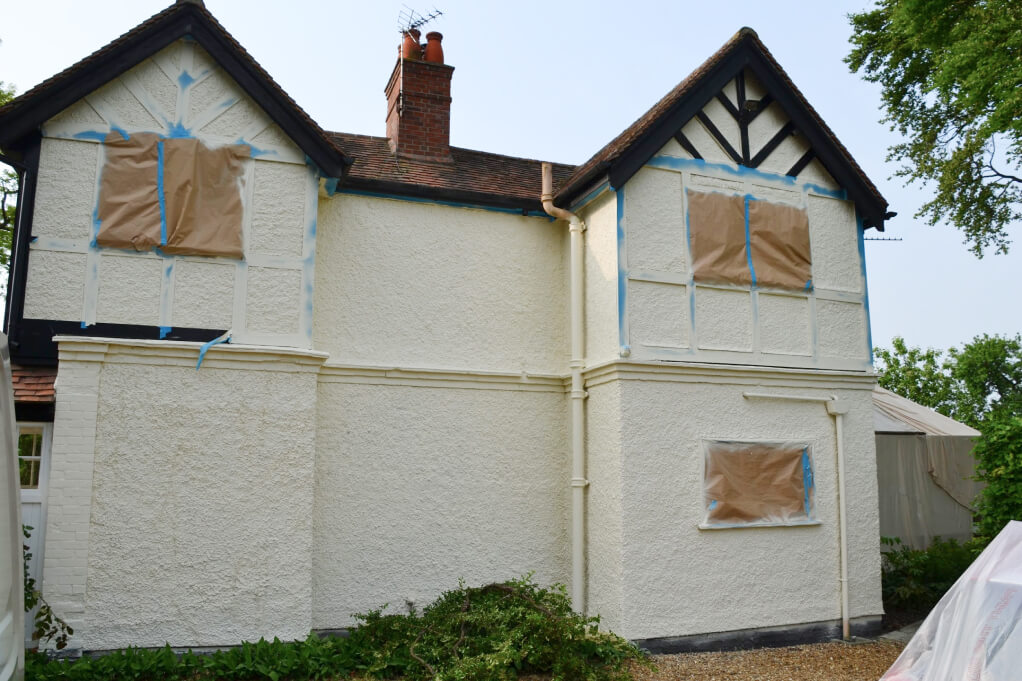
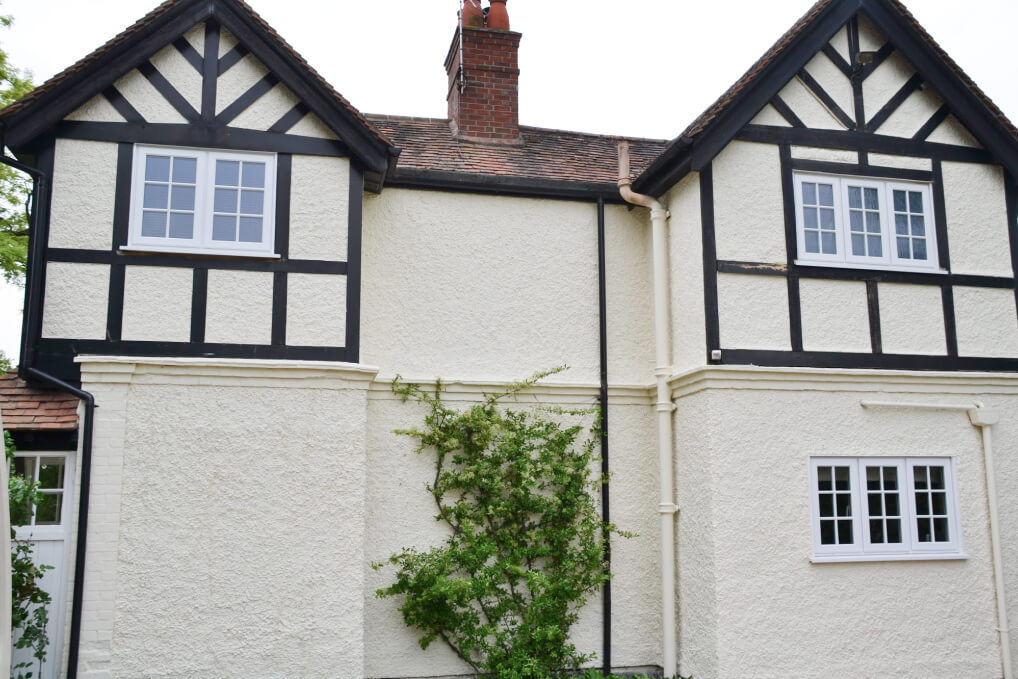
Video from one of our exterior painting projects.
We treated the north-facing wall with anti-fungal wall treatment as well as all cracks has been filled and sanded.
Other projects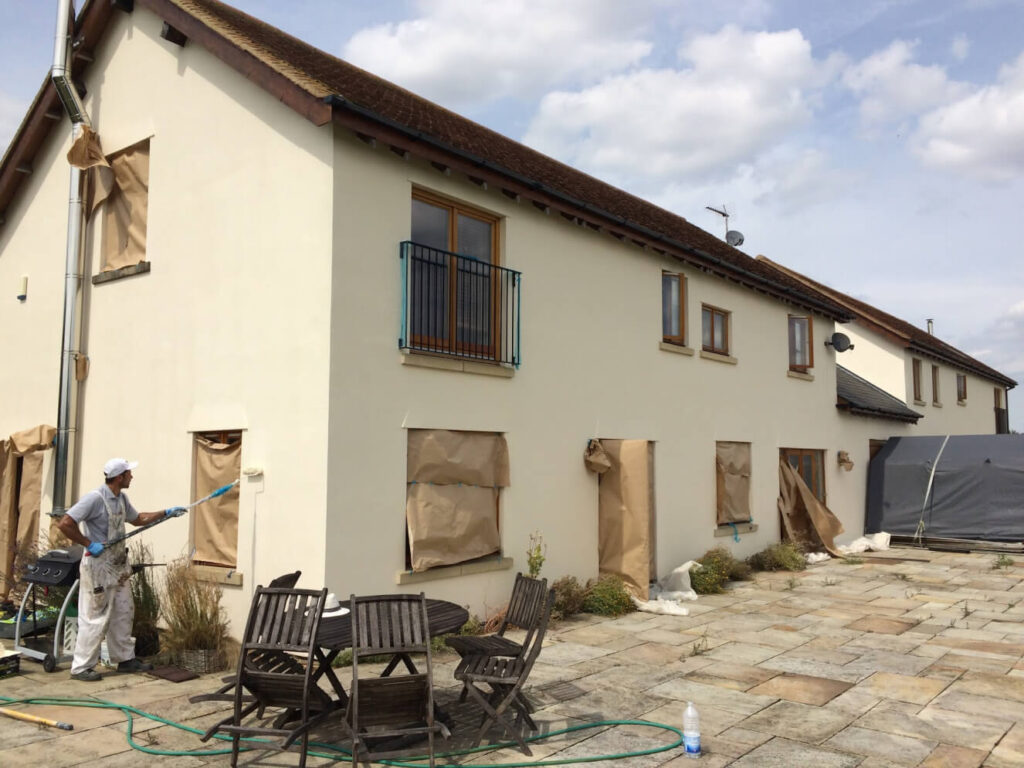
Painting masonry with a brush and a roller is fairly simple. However, there are some tricks to make painting masonry that much easier. Below, we have a guide on how to paint masonry with a brush and roller for beginners or anyone who needs to top up their knowledge.
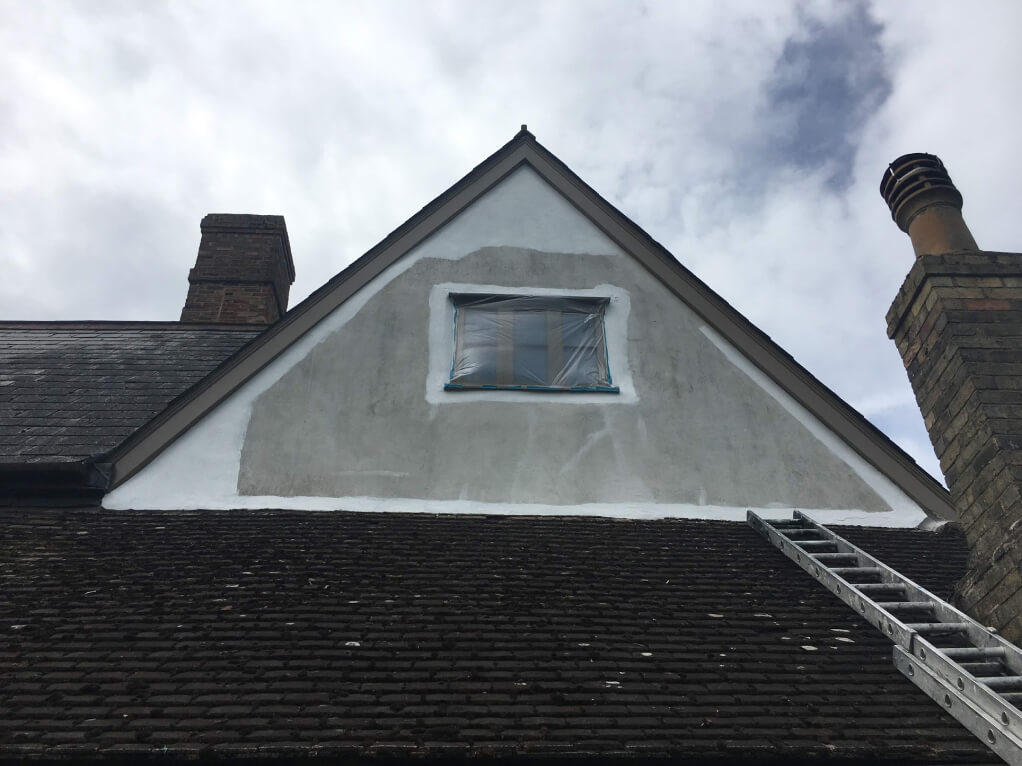
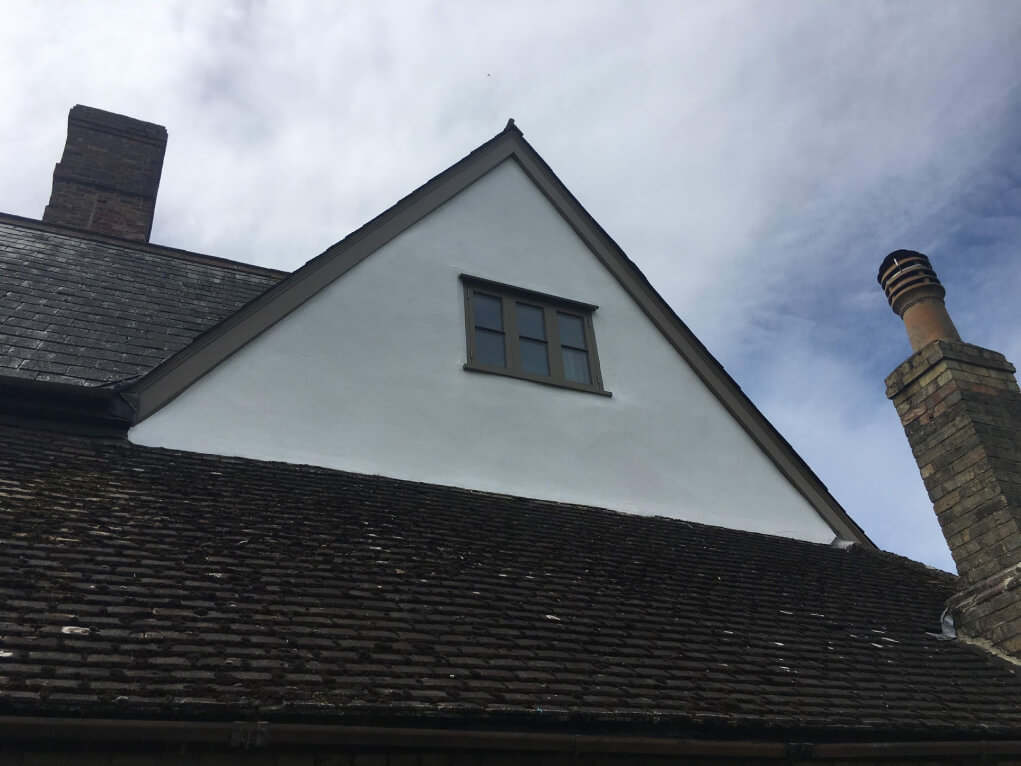
Take your time when painting masonry with a brush or roller and follow the guide above to get great results. For more info about preparing masonry for paint, please see our guide about that. We also have articles about the best masking products to use and even more tips and tricks on painting outside spaces right here.

Yes, you can, but if you’re painting an uneven surface, bricks and mortar, for example, it is easier to use a brush to get into the cracks between the bricks. Using a paintbrush does take longer, of course, but if you’re painting brickwork, for example, a roller may struggle to get into all of the areas.
A masonry paintbrush is a big paintbrush with long bristles that are very firm.
They are usually made from natural materials to ensure the bristles do not react with the paint.
Masonry paintbrushes are a bit bigger than a conventional paintbrush, allowing you to cover more of a surface quickly. Masonry paintbrushes are perfect for using water-based masonry paint.
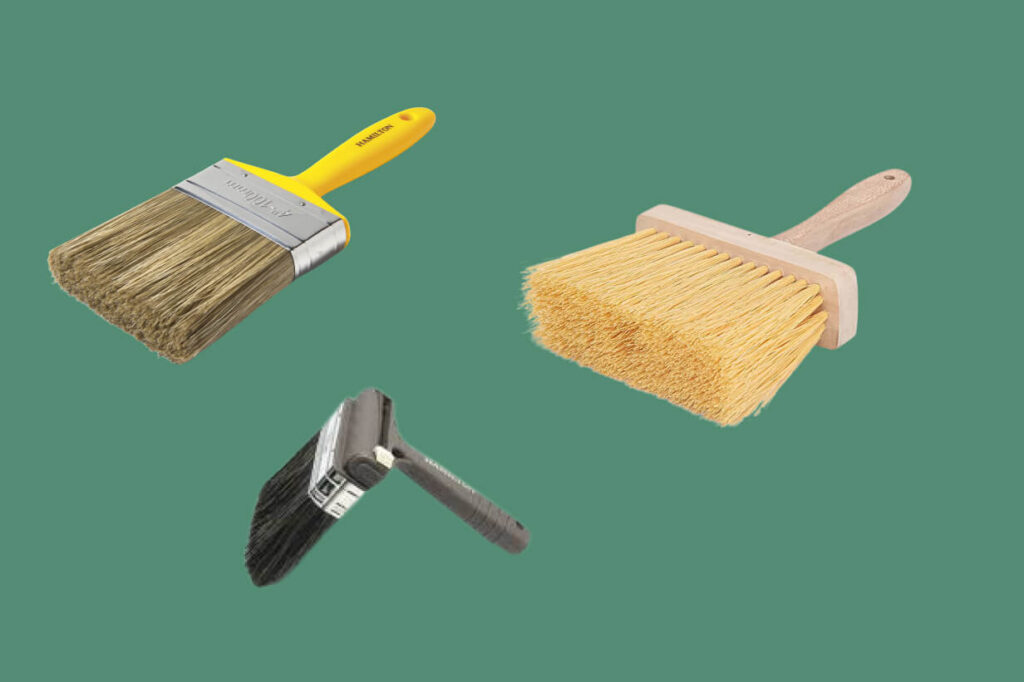
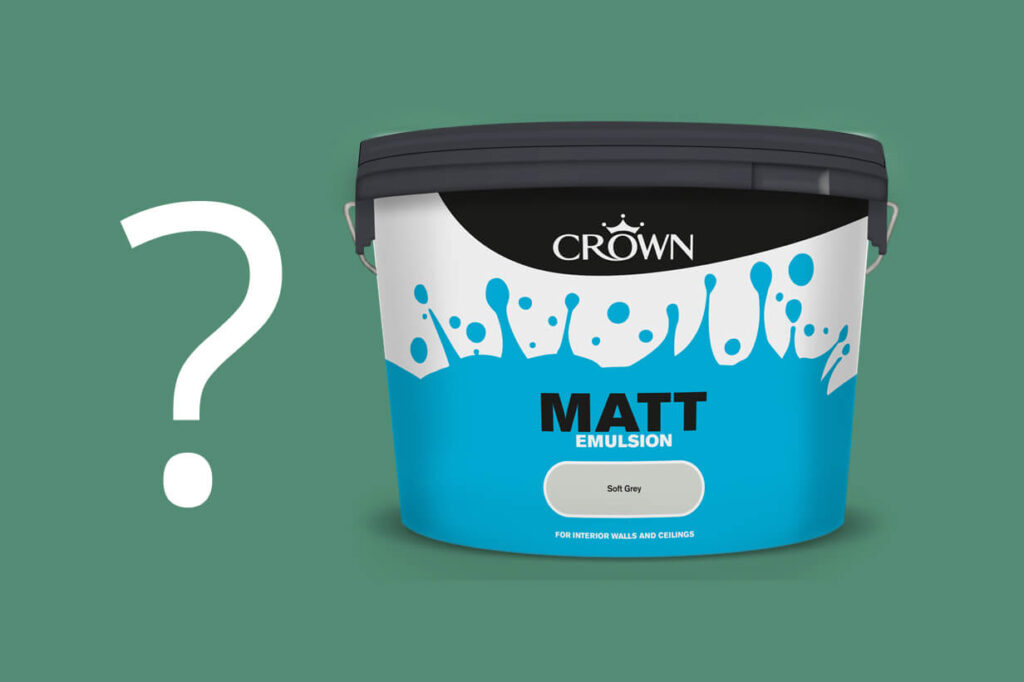
Masonry is very absorbing, which is why masonry paint is often thick.
This prevents the masonry sucking up too much of the paint. This means that normal household paints aren’t great for masonry from the get-go. However, as we’ve discussed, masonry paint also has added ingredients to help with weather-proofing your home while keeping it breathable so moisture can escape. Interior paint doesn’t have these added ingredients.
So, while you could paint your home with normal paint, it wouldn’t offer any protection, and you’d have to apply many, many coats to get a good finish.
Applying normal paint to the outside of your house won’t harm the brickwork, but it won’t do any good either, so stick to masonry paint!
You can use masonry paint indoors, but there really isn’t any need to. Paint is designed to work brilliantly outside, and it really does work great in that environment. Interior paint is designed to protect your walls from lots of things that can occur in your home (like the kids drawing on the walls). Both types of paint do their jobs very well and perform extremely well in the environment they were designed to be in. So, while you can use masonry paint indoors, there really is no need.
We hope this look at masonry paint and what it can and can’t do has been helpful. Masonry paint is a fantastic product that will keep your home protected for many years. For more info about paint and other painting tricks and tips, please explore our website service. We also have the best paint sprayers available in the UK right now, right here if you want to take your painting to the next level!

Masonry paint can be used to protect most types of masonry from weather damage and keep your home looking great. It can protect your home from rain, mould and UV rays. It can also help with damp and moisture issues. Most people who use masonry paint do so because of the added colour that it brings to their home. However, it also adds a lot of protection, and so it is fantastic for protecting older property. So, while many homeowners use masonry paint to enhance the look of their home, it will protect it too.
Yes, while you could use masonry paint inside buildings, there really is no need to. It is often more expensive than normal paint, and it offers no benefits inside a property over standard interior paint.
Paint is designed to be used on exterior walls and exterior masonry and allows the property to breathe and water to escape while still offering protection from the elements. Alternatively to masonry paint, you can use protective wall coatings. You simply don’t need waterproof or water-resistant paint in your home.
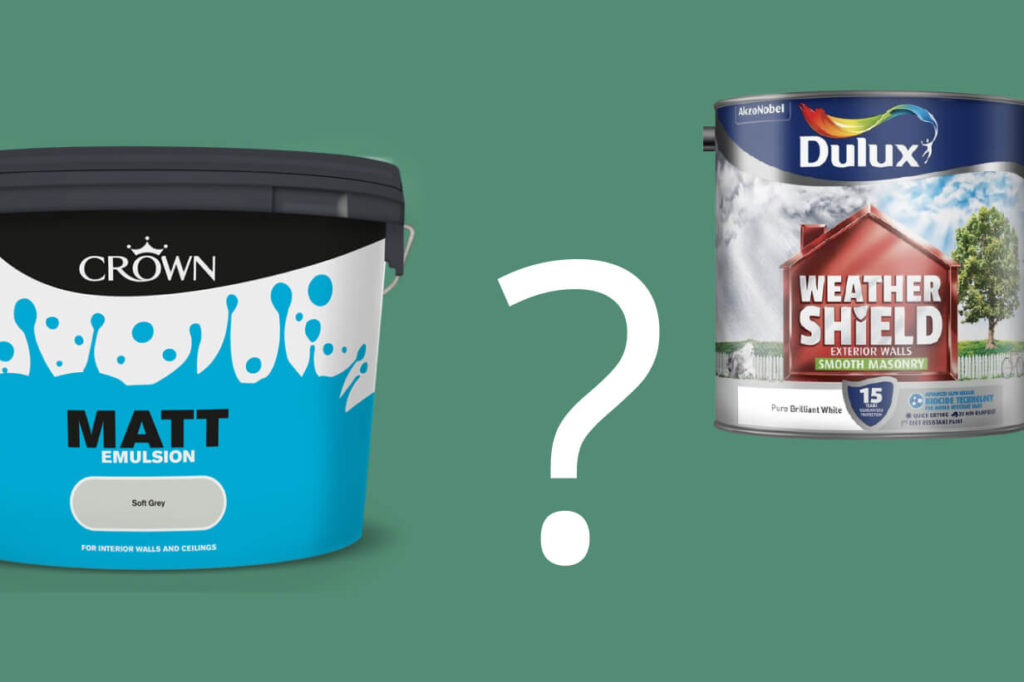
If you’ve ever used masonry paint, you’ll know that it is thicker than regular paint. This isn’t because masonry paint simply has less liquid in it, though. It is actually because masonry paint is made from completely different materials than the regular household stuff. Most interior paint is water-based. Paint can also be water-based but has added chemicals designed to offer maximum protection. Because of these added chemicals, most masonry paints are regarded as water-based acrylic paints, not just simply water-based.
This means there is resin in the paint that offers a lot of protection, protection that simply isn’t needed inside the home. There are different types of masonry paint. We’ll get to those later. Basically, the difference between masonry paint and normal paint is that paint contains plastic or other ingredients that are designed to protect the outside of a property from the elements. Normal paint doesn’t have these ingredients because it doesn’t need to.
You can use masonry paint on a wide array of surfaces. In fact, most materials that a house is made from will benefit from being painted with paint, even wood. It is better to use a paint or varnish designed for wood, but some people do use masonry paint.
So, you can use masonry paint on a wall made from brick, stone, wood, metal, plaster, concrete, lime, pebble dash and cement render.
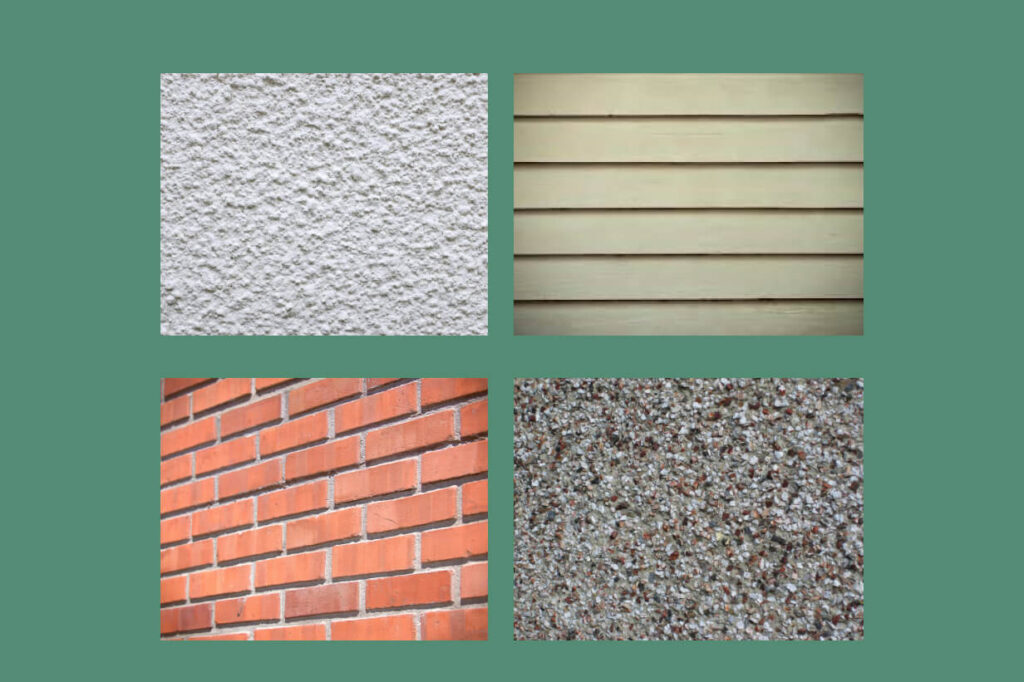
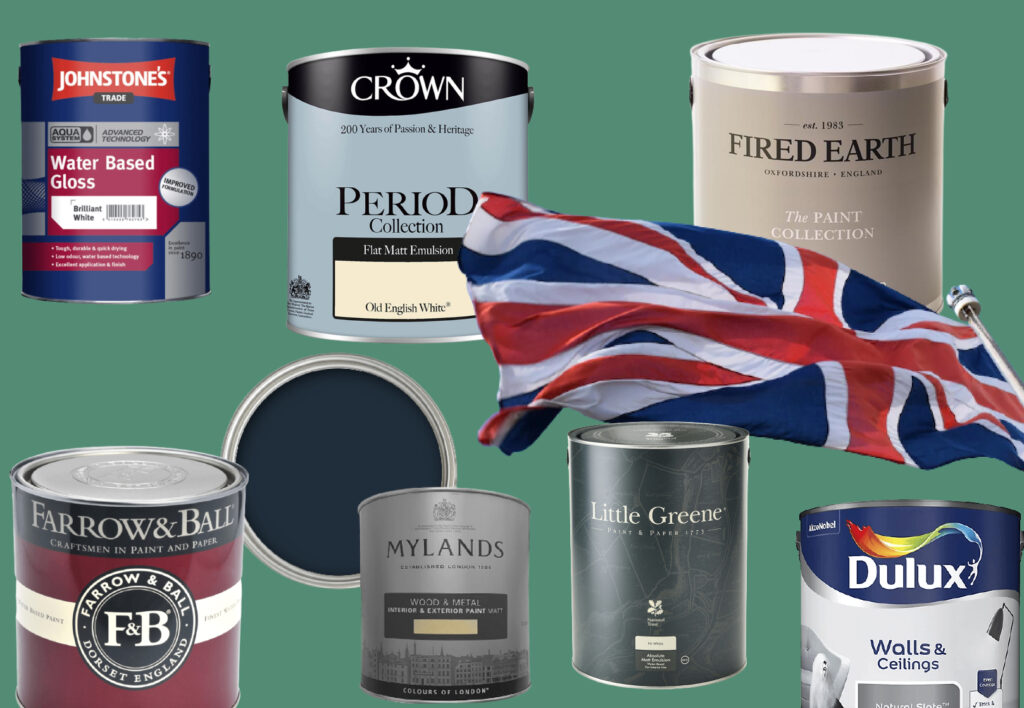
As we said, there are different types of paints available, and the type you choose depends on the property you have and the protection you require. In general, though, most masonry paint that is readily available is water-based acrylic paint. This offers maximum protection while adding some lovely colour to your home too.
There are many UK paint brands of paint available, Sandtex and Dulux paints are the most popular, though. Both brands also make fantastic primer as well. And yes, if your home isn’t already painted, you will need a primer too.
Textured masonry paint is brilliant for hiding cracks and uneven surfaces in the masonry of your property. Smooth paints are great for a quick application to large areas but don’t provide a nice textured look. If you’re considering textured masonry paint for your property, Sandtex does a huge range of colours and different textures. Most of their textured paints have a fine texture which is perfect for covering cracks but still offers a wonderfully smooth finish from a distance. Their paints also have great coverage and you don’t need too many coats for good results.
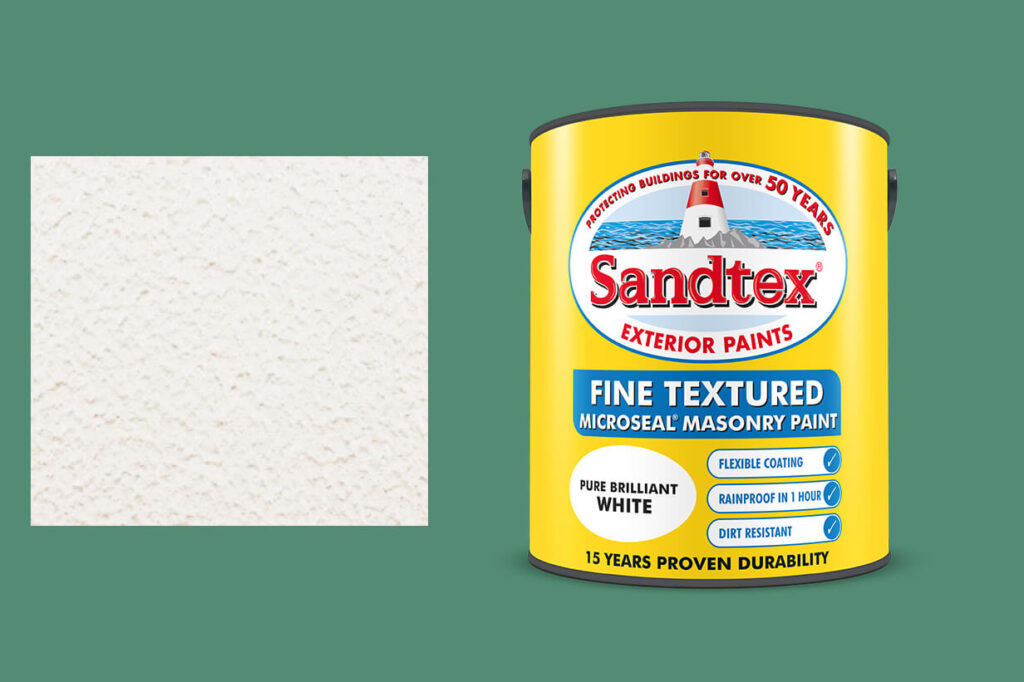
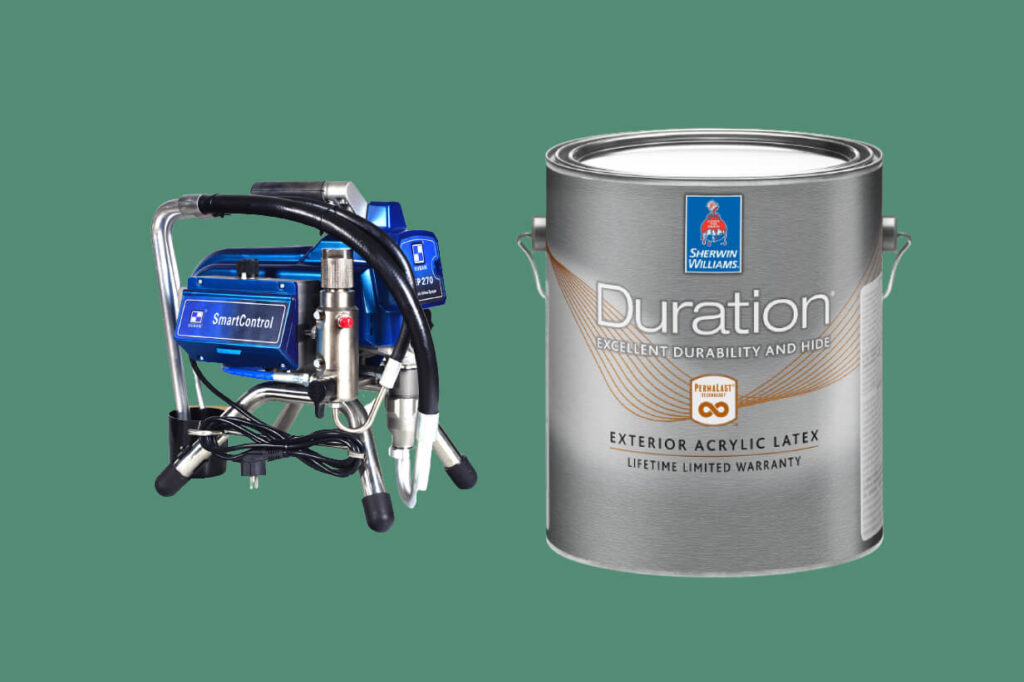
Yes, you can. Airless sprayers are the go-to choice for most people when it comes to exterior walls. They are designed to spray a lot of paint quickly so you can cover large exterior walls very fast. You will want a quality spray gun for the job, though.
Wagner has some brilliant spray guns that are not too expensive and will paint the exterior of your home nice and fast. Plus, you can use them to spray fence stain, varnish for wood and interior paint too. So, you won’t be buying a spray gun for one job.
If you do use a spray gun for your masonry paint, we’d recommend buying some quality masking tape and paper to cover anything you don’t want to be covered with paint, like windows! We’d also recommend learning how to thin paint. We have an article about thinning paint which will help!
The differences between textured and smooth paint are that one is smooth and one is textured. Most textured paint has silica sand added to it to provide a textured look. So the paint itself is completely the same as the smooth stuff; it is the sand that offers the texture.
No, not really. It does cover cracks and hides them nicely, but it doesn’t really offer any more protection than smooth paint applied well. Smooth masonry paint covers cracks and uneven surfaces, but they may still be visible. Whereas with textured paint, the cracks are more disguised but no more protected.